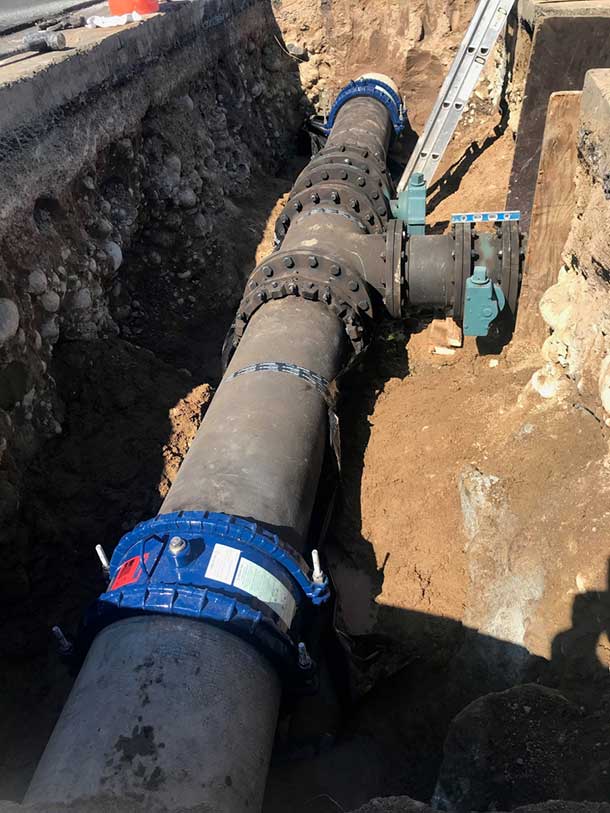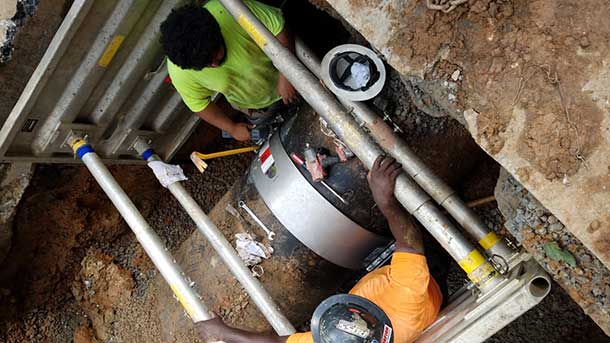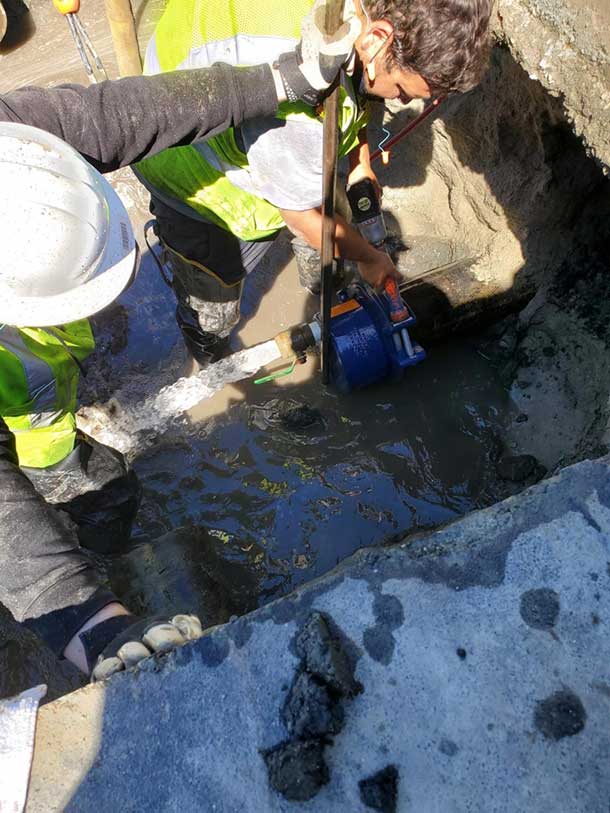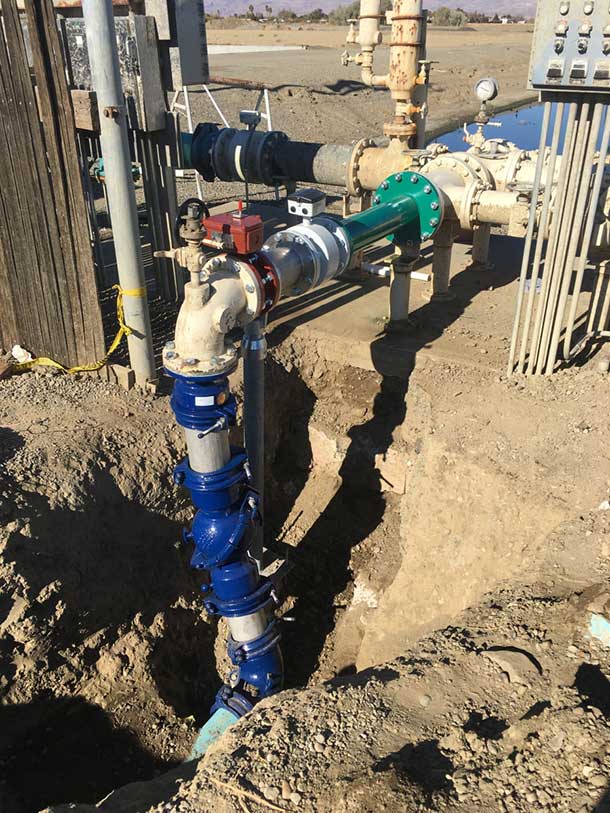Best Practices for Pipe Repair & Replacement Programs
Date:
Publication:

The very nature of a pipe burst is that it is unexpected. Crews jump into action and solve the problem as quickly as possible to mitigate damage. Like any emergency, the speed of resolution is often more important than the cost. Utilities are prepared to pull personnel off other jobs, rent expensive equipment, pay high couriers fees and so on. In contrast, replacement of aging infrastructure often comes with the gift of time that is used to hire experts to do condition assessment, source the optimal solution and prioritize critical needs first.
While you may not know exactly when and where the next pipe will burst, planning for breaks is possible, and the effort expended on this is a direct benefit to optimizing replacement projects. Below are some best practices that utilities are using to deal with the historical issues that are clawing at budgets today.
Inventory Management
With global supply under strain, never has it been more important to have the inventory that you need on hand. It’s impossible to have every item you will need and the cost to purchase expensive parts for a very unlikely event, is more a luxury than a need. Combining the knowledge of your infrastructure, such as pipe type, size, and age, with the experience of work crews is critical to maintaining an affordable and high turnover inventory.
Carefully look at the demand for repair products and when they are used most frequently. Look at your orders over the course of the last three or four years and try to identify trends. See if there are periods when the demand for certain clamps or couplings is high, and other periods when it is low. This will help determine which products should be in high supply and which ones can be lower.
There are also products that are designed to fit a wide range of pipe types and diameters. Product design can go a long way to broadening the versatility and scope of repair. For example, there are several coupling products, such as the HYMAX® Versa, that have the versatility to either join or repair pipes, offering a high degree of flexibility to make repairs as needed. These kinds of clamps and couplings can take the place of up to three traditional products, on the shelf or in the truck.
Weather can also play a key role in determining which repair supplies will be in high demand and how fast you can obtain them. Repairs are often required when the ground shifts during the spring thaw, and at other times of the year when the weather is extreme. Keep in mind deliveries can be harder to fill when severe weather hits parts of the country.

Using the Right Tools
When a repair is not working, it’s often because the wrong practices are being used to do the job. For example, thrust blocks are probably the most common way to restrain pipe. Engineers go to great lengths to design the right thrust block based upon the needs of the project. Bags of concrete mix with holes punched in them and a bucket of water poured on top is not a thrust block, nor is a 4x4 post. Make-shift restraints inevitably fail and then the whole expense of the repair needs to be repeated. However, in many circumstances, mechanically restrained products, such as the HYMAX Grip that uses a mechanism to grip the pipes, can be used to restrain the pipe saving repair time and cost of engineered thrust blocks.
If you are connecting pipe, use a coupling, not a clamp. Repair clamps are designed to repair holes or ring breaks. They are not designed to couple pipe since they offer no deflection or restraint capacity, which could result in a failure.
Choosing the right sized repair product is also important to making good repairs, and you can only know for sure the size of the pipe with an OD tape. It’s not uncommon for people to devise their own methods for measuring the outside diameter of the pipe and getting it wrong. This is the first thing to double check when a new clamp install is leaking – do you have the right sized clamp? Some product lines like HYMAX have wide OD ranges meaning that the products will work on a wider variety of ODs, so there is some margin for error.
As a rule of thumb, ensure you have the following in your truck:
- OD Tape
- Torque Wrench
- Deep Socket Set
- Adjustable Wrenches
- Pipe Scraper
- Cordless Impact Wrench
- Safety Gear (Hard Hat, Protective Eyewear, Safety Vest, Protective Shoes, Etc.)
- Pipe Saw/Cutter
- Trench Box
Training
Keeping up to date on new solutions and even brushing up on skills that are used every day is important. It’s not uncommon for crews to pick up bad habits or use old methods that take longer to get the job done. Bad habits can affect worker safety and tend to get passed on to new recruits.
Both AWWA and NRWA host a series of educational workshops with different manufacturers, many of which are accredited. If you prefer to dive deep into your favorite repair products you can call the manufacturer directly and see what courses they are offering. While it’s ideal to get the hands-on experience, due to the global pandemic, more manufacturers are doing online training making it more accessible than ever before.

>Approved Contractors vs. In-House
If your budget allows you to hire expert repair contractors, this is an excellent option as it alleviates having to own the expensive equipment and keeping up to date on specialized training. Not having the cost of these highly skilled workers on your payroll when nothing is happening, can also justify the higher cost when you do need them. Ensure that you have an annual review of approved contractors to stay up to date, and who is available and any new equipment that they may have acquired, or perhaps they are willing to offer preferred pricing due to the number of times you called them in the last year.
The downside of contractors is that they are not always available and when big weather events happen, they are in top demand, so availability and pricing can be an issue. If most of your repair work is done by contractors, you will still want to ensure your staff are up to date on training in case they are the only option you have in a time of severe crisis. With this outsourcing approach, engineers often decide when and how to do the repairs, but utility managers should be part of the planning process. Once a piping system is completed, it’s in their hands to ensure the system works properly.
In-house crews have their advantages. They are most familiar with the system and usually have a broader understanding of all the factors at play that lead to the repair, which can affect the long-term outcome. In-house crews tend to have a holistic understanding of the system, which is better for inventory management and long-term planning for pipe replacement programs. On-site crews may fix a repair, and decide that the pipe needs to be prioritized in the replacement program, given the condition.
As there are advantages to both, a hybrid approach can work very well. In some cases, it can be pure necessity if a utility does not have the large construction equipment that is needed for the repair. So regardless of your approach, it’s important to have these relationships in hand before you need them in an emergency.
Choosing the Right Materials Matter
Not all materials are made equal, and the price will factor into choosing one material over another. If you take into consideration repairing or replacing in your new pipe buying decisions, going with the higher quality product pays for itself in the long run.
Couplings and clamps that are easy to install can make repair jobs more efficient, save time and help eliminate installation errors. There are a variety of repair couplings that are quick and easy to install. For example, the HYMAX 2 coupling has top-facing bolts, that are simple to tighten, and drastically cut installers’ repair time. Products that don’t have to be disassembled can also make a big difference in making a quick installation.
Avoid purchasing low quality products that will fail early and lead to another repair. It pays to use high-quality products that are exceptionally durable in harsh conditions and designed to prevent future pipe damage.
Optimizing Your Distribution System is Your Best Defense
There are many factors and indicators leading up to a pipe burst. While these best practices will help streamline your ability to react and rectify an immediate problem, optimizing your distribution system is the foundational best practice for pipe repair and replacement. Monitoring and managing water pressure in your system will go a long way to preventing pipe bursts and investing in this technology will reduce your number of pipe bursts. Monitoring the progression and severity of leaks will also help crews to prioritize repairs before a burst is imminent. 24-hour leak monitoring can be as easy as adding a leak detection node to an existing hydrant that will transmit data and inform crews of imminent concerns.
All utilities are at some point of digital transformation, there really is no linear path. If a utility is struggling with an excessive number of pipe bursts or aging infrastructure that needs to be urgently replaced, this is an excellent entry point for injecting sensors and control mechanisms to monitor leaks and manage pressure.

Click here to read the article in Water Finance & Management